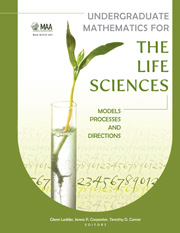I - Models
Summary
One reason for the diversity of curriculum ideas for biology is that there are only a small number of slots, perhaps only two or three, available in the packed curriculum of biology majors. A second reason is the lack of uniformity in the biology curriculum that the mathematics curriculum is supposed to support. Physicists are generally in agreement about what constitutes introductory learning in physics, which has led to a mathematics curriculum that varies little among institutions, with no issues more serious than the order of linear algebra and differential equations. Biologists, in contrast, have not yet reached a consensus on what constitutes introductory learning in biology. Accordingly, there is no single mathematics curriculum for biology that can be applied in all institutions.
In the past decade, a number of approaches to the problem of replacing the standard calculus sequence with something more appropriate for biologists have been made by mathematicians, with connections to various areas of biology. This broad issue of mathematics curricula for lower-division biology students is addressed in eight of the thirteen papers in the Modeling section, which fall into three classes.
The simplest approach, as seen in the first three papers, is to modify the courses that biology students are already taking, but to leave them compatible with the standard sequence so that students can move between the traditional physics-based and alternative biology-based courses. These three papers are arranged in order of increasing scope.
- Type
- Chapter
- Information
- Undergraduate Mathematics for the Life SciencesModels, Processes, and Directions, pp. 1 - 4Publisher: Mathematical Association of AmericaPrint publication year: 2013



